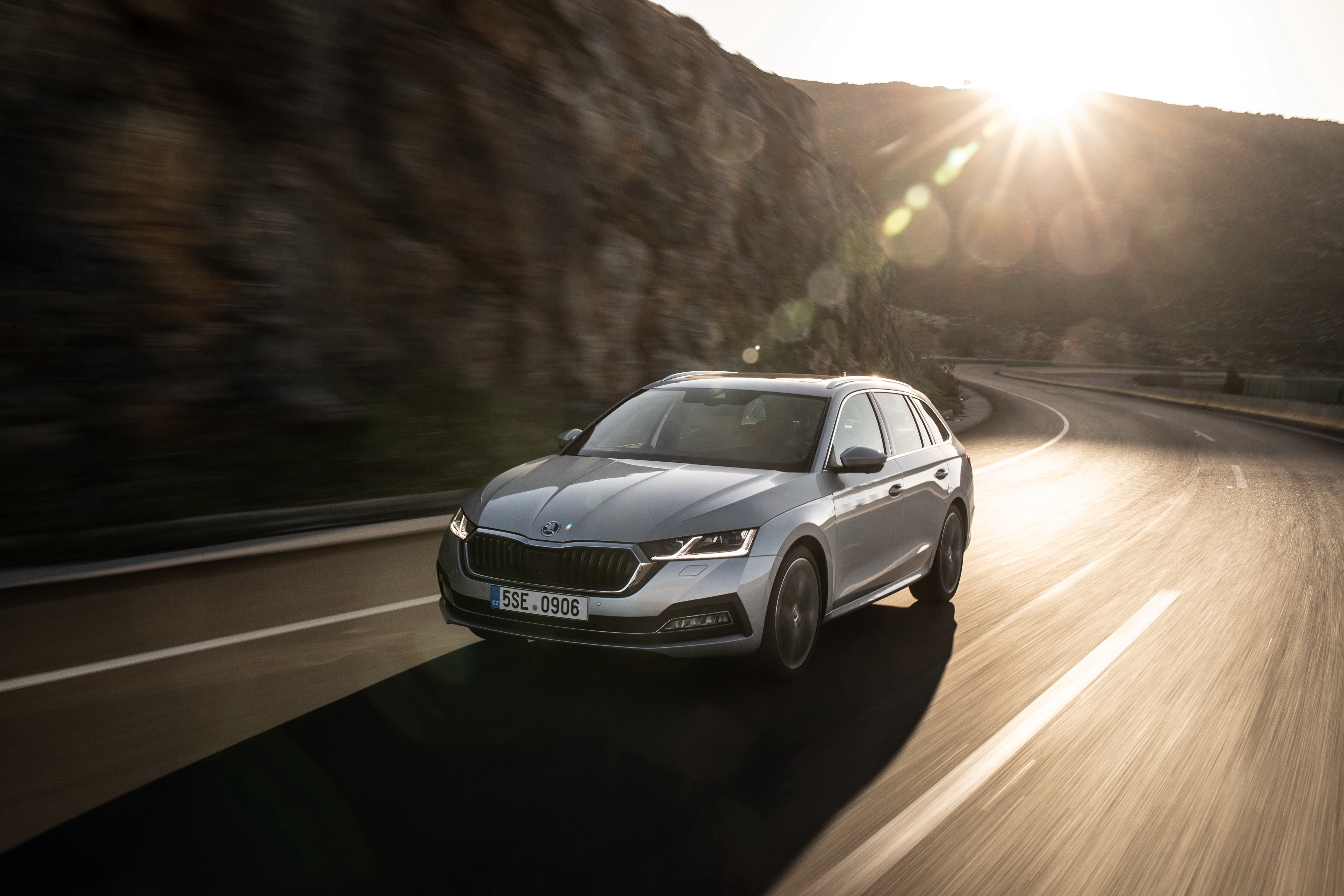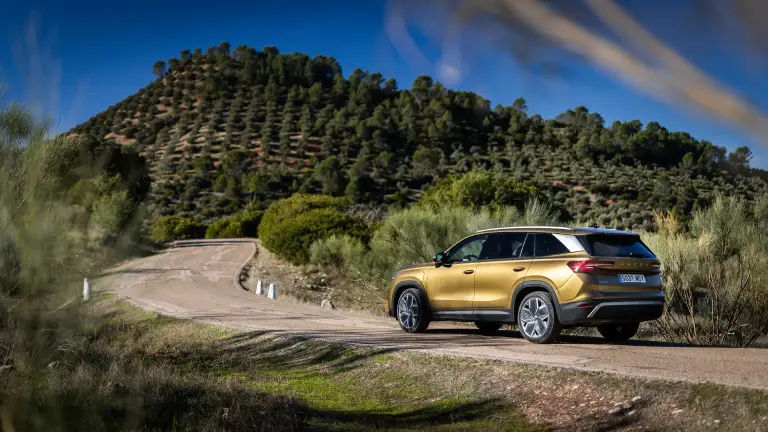Strube: Combustion engines are not outdated

The future of motoring does not belong to one design variant alone, but to an environmentally friendly and sensible range of choices. Christian Strube, the member of the ŠKODA board in charge of Technical Development, sets out the company’s vision for the future.
29. 4. 2020 Škoda World Innovation & technologyHow will the models mix have to evolve for ŠKODA to support the implementation of the Paris agreement on climate change effectively?
We can only achieve the goals of the climate change agreement through eMobility. Fully electric vehicles are the most effective in this regard, but hybrid plug-ins also deliver substantially lower CO2 emissions, and mild-hybrid systems are also excellent. We will adapt our model lines accordingly. At the same time, though, we will of course work as hard as possible to ensure that our petrol and diesel engines are even more efficient – because these are going to play an important role in the fuel mix for some time to come.
eMobility is on the rise, but combustion engines remain very important. Why is that?
There are several factors at play here. First, demand is definitely an important reason. Even though the proportion of electric cars is growing, many customers still prefer combustion engines. Apart from that, every technology has its own specific advantages for particular uses. If I need a four-wheel drive car with a long range and high torque and want to use a trailer, then a diesel engine is suitable. In town, a small petrol engine with a hybrid drivetrain is ideal for everyone who has nowhere to charge an electric motor. And we mustn’t forget that combustion engines make us money that allows us to develop electric cars.
 ŠKODA SUPERB L&K - the first evo-generation diesel engine with lower weight, consumption and emissions
ŠKODA SUPERB L&K - the first evo-generation diesel engine with lower weight, consumption and emissions
What specific challenges does this present to you and your engineers?
eMobility demands special new technical skills in many regards. In passive safety, for example. Not because accidents involving electric cars are somehow more dangerous than petrol engine cars crashes, but because a fully battery-powered vehicle has to be constructed in a very different way. The battery covers the entire chassis, which affects how the car reacts to collisions. We are testing new accident scenarios, with various speeds and other factors. In this context we’ve worked intensively on the special technical requirements of fully battery-powered electric vehicles and expanded our capabilities.
What about acoustics?
Acoustics is another area that poses special challenges for technicians working on battery-powered vehicles. In electric cars, you are much more aware of sounds that used to be drowned out by the engine noise. That can be distracting, so we have to think of ways to solve this problem. Silent running combined with the interior also delivers a completely new, relaxing driving experience.
 Christian Strube, The member of the ŠKODA board in charge of Technical Development
Christian Strube, The member of the ŠKODA board in charge of Technical Development
Have the considerations about silent running sidelined dynamics? The information about electric vehicles always emphasises their effective acceleration properties.
Our electric drivetrains generate an incredible amount of energy that can be attained instantaneously when accelerating to overtake, for example. That makes our cars exceptional. Developing this property and coordinating the various components is a challenge we have to confront differently than in the RS model, for example. Designing a beautiful instrument panel has always been part of our repertoire, but in combination with an electric motor we have to approach the challenge in a completely different way. If the customer says: “Wow, that’s a really great driving experience” – then we’ve achieved our goal. Besides our electric cars, the corresponding wallboxes in various performance classes and suitable applications are another part of this holistic experience. We have to work on these services with the same care and precision as we devote to developing our vehicles.
I never drive without online navigation
Looking back over the past fifteen years: which technical innovation – apart from the shift towards electric cars – gave ŠKODA the biggest impetus during that time?
Digitalisation, without a doubt. The development of the construction of instrument panels, car seats or car bodies went ahead at pretty much the usual pace. But vehicle operation has changed fundamentally. To a large extent that was caused by progress in connectivity and HMI, which means human-machine interface. How can I understand a vehicle; how does it understand me? Those are the key questions we’re dealing with here. At ŠKODA we make sure that we do not blindly implement something just because it is technically possible – we focus on what makes people’s everyday lives simpler and what inspires them.
Connectivity: these days drivers benefit from a whole series of assistance systems. What could you personally not do without now?
I never drive without online navigation. Anyone who drives a lot in a big city knows what I’m talking about. The navigation system gives you an early warning about traffic jams and suggests alternative routes – that is both useful and extremely convenient. I’d never want to drive without online navigation again.
 Digital technology: modern infotainment and supreme connectivity in the all-new ŠKODA OCTAVIA
Digital technology: modern infotainment and supreme connectivity in the all-new ŠKODA OCTAVIA
What connectivity innovations can we look forward to?
In future, our customers will be able to update their car’s control unit “over the air”. That will save them a trip to a service centre. In addition to that, we will offer customers even more “on demand” services, meaning that customers will be able to buy extra functions for their car online, e.g. increasing charging capacity or adding the Travel Assist function.
What is ŠKODA particularly good at in terms of connectivity?
We offer what our customers actually need. In other words, we have made a conscious decision not to jump onto pointless bandwagons. We try to keep things simple and understandable for our customers and we stick to what we’re good at. For example, ŠKODA offers wireless smartphone charging and “MirrorLink”, so you can use your favourite apps right on your car’s display. This is even available in A0 class cars.
 The all-new ŠKODA OCTAVIA COMBI
The all-new ŠKODA OCTAVIA COMBI
Is ŠKODA going to offer autonomous driving?
This is clearly the direction development is heading in, and not just at ŠKODA, but it will take some time. The advantages of autonomous driving are clear, especially for people with a disability or in terms of accident prevention.
The statues of Laurin & Klement in my office inspire me every day
What key qualities does a good engineer need, in your opinion?
I’d say creativity, curiosity and the desire to actively shape the future. Anyone who is curious and asks questions is automatically creative. If they also want to change things, then they have all the qualities necessary. They also need specialist knowledge, obviously, but that’s what the right education provides.
Your remit takes in a very broad area: design, engine development, chassis development, connectivity... How do you manage to keep up with all the developments in a time of transformation?
Of course, I can’t read three books and do online research every day. But: What is much more important is surrounding yourself with competent colleagues and being close to the customer, which is particularly vital for me. In other words: you can only keep up if you discuss ideally in detail with your colleagues and you’re close to the centre of events. ŠKODA’s employees are absolute experts who keep me informed about all the latest developments.
 Christian Strube, The member of the ŠKODA board in charge of Technical Development
Christian Strube, The member of the ŠKODA board in charge of Technical Development
ŠKODA is celebrating 125 years since its founding this year, which makes it one of the oldest carmakers in the world. Does this instil in you a sense of responsibility towards the firm’s tradition?
You bet it does! The statues of Laurin & Klement are visibly placed in my office and inspire me every day. The ŠKODA brand and the people who achieved such incredible success for it over the decades are extremely important to me. They are - why the company’s tradition fills me with a strong sense of responsibility. We are facing lots of challenges and even today our work is very demanding, but ŠKODA experienced very difficult times in the past as well. I constantly come across lots of “old warriors”, for example when my colleagues were working on the book “Die Geschichte der Getriebe Laurin & Klement und ŠKODA”. When I see the enthusiasm they devoted to this brand all their lives, I feel responsible for the legacy that stretches all the way back to the company’s two founders. To work in the spirit of all those who brought the company where it is today and those who will continue in the future.



















